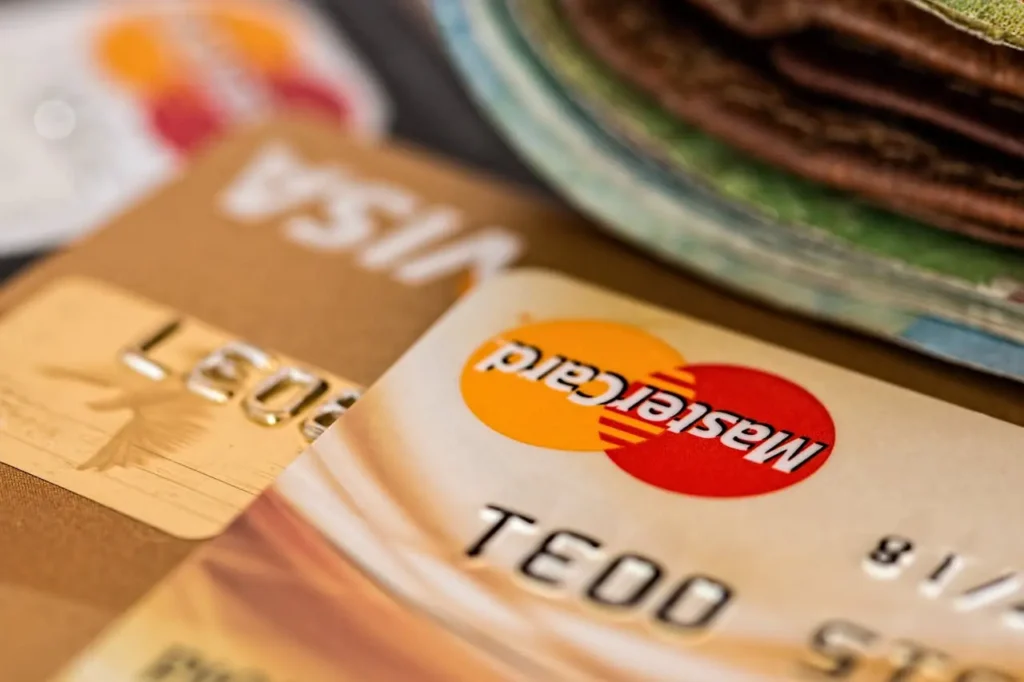Table of Contents
ToggleUnderstanding Your Student Loan Timeline in 2025
The journey to repay student loans in 2025 is more complex than it appears on the surface. It’s not just about the balance or interest rate; your timeline depends on a web of factors including the type of loan, your repayment plan, your earning potential, lifestyle choices, and even the economy. Recent changes in federal policies and an evolving lending landscape have introduced more flexibility but also more decisions. Borrowers now have more tools than ever to estimate their repayment timelines, adjust course when needed, and reduce total interest paid. Understanding how these factors interact will help you take control of your financial future instead of being dictated by it.
The average time to repay student loans has gradually increased due to rising tuition costs and stagnant wages. Many graduates now exit school with balances that resemble mortgage debts. In response, both federal and private loan programs have expanded their offerings to accommodate borrowers’ financial realities. Whether you’re aiming for a fast-track payoff or looking for manageable monthly payments over a longer horizon, having a strategic repayment plan in place is key.
How Long Does It Typically Take to Repay Student Loans?
For federal student loans, the default timeline is 10 years under the Standard Repayment Plan. However, most borrowers don’t stick to this timeline. Instead, due to financial constraints or life goals, many opt for extended or income-driven plans that stretch payments over 20 to 30 years. According to recent Federal Reserve data and supported by the One Wisconsin Institute, the average student loan borrower takes over two decades—about 21.1 years—to completely pay off their debt.
This protracted timeline is due to several factors, including rising loan balances, fluctuating job markets, and the increased popularity of plans that offer lower monthly payments in exchange for a longer repayment period. Additionally, borrowers may enter deferment or forbearance multiple times during economic hardships, effectively pausing progress. Some may also prioritize other financial goals—like buying a home or investing—over aggressive loan repayment, further extending the timeline.
What Influences Your Student Loan Payoff Timeline?
1. Type of Repayment Plan
Your chosen repayment plan is arguably the single most influential factor in determining how long it will take you to pay off your student loans. Federal loan borrowers can select from several plans, including Standard, Graduated, Extended, and Income-Driven Repayment (IDR) options. The Standard Repayment Plan, though fastest, may have higher monthly payments that aren’t feasible for every budget. On the other hand, IDR plans reduce monthly obligations based on your income and family size, but often extend repayment periods to 20 or 25 years, with potential for loan forgiveness at the end.
Private student loans are less flexible. Each lender sets its own repayment terms, which usually range between 5 to 20 years. Unlike federal loans, private loans rarely offer income-based options or forgiveness. However, some lenders provide temporary payment relief or customized plans for borrowers in hardship, though these are generally limited in scope and availability. It’s important to fully understand your plan’s structure and implications before committing.
2. Total Loan Amount
The size of your student loan debt plays a critical role in determining how long it will take you to repay it. Larger balances naturally require more time to pay off—unless you’re able to make substantially higher monthly payments. For example, a borrower with $100,000 in federal loans will likely need more than a decade to repay the debt unless they choose a high monthly payment or aggressively pursue a payoff strategy.
Moreover, higher balances typically accrue more interest over time, increasing the total cost of borrowing. This is particularly true for graduate and professional school loans, where balances can easily surpass six figures. The larger your debt, the more strategic you need to be—especially when considering refinancing, selecting repayment plans, or deciding whether to pursue forgiveness programs.
3. Interest Rates
Interest rates are another critical element affecting your repayment timeline. The higher the rate, the more you’ll pay over the life of the loan unless you refinance or make additional payments toward the principal. Federal student loan rates for the 2025–2026 academic year are significantly higher than in previous years: 6.93% for undergraduate Direct Loans, 8.49% for graduate Direct Loans, and 9.49% for Parent PLUS and Grad PLUS loans.
These rates can dramatically increase the long-term cost of borrowing, especially for those who take decades to repay their loans. For instance, a $50,000 loan at 6.93% interest will accumulate over $19,000 in interest alone if repaid over 20 years. By contrast, reducing the repayment period or refinancing to a lower interest rate can save thousands. Borrowers with good credit or a co-signer may qualify for private loan refinancing with rates as low as 4% to 5%, depending on the lender.
4. Income and Budget
Your income level and monthly budget determine how quickly you can eliminate your student loan debt. A higher income allows for greater financial flexibility, enabling you to make extra payments that chip away at the principal and shorten your repayment timeline. Conversely, lower-income borrowers may struggle to make minimum payments and rely on extended or income-driven plans.
It’s essential to align your repayment strategy with your budget. Budgeting tools, financial advisors, and student loan calculators can help project how long repayment will take under different scenarios. Importantly, all federal student loans allow for prepayment without penalties, so even small extra payments—applied consistently—can result in substantial interest savings and a faster path to being debt-free.
Comparing Federal Repayment Plans (2025 Snapshot)
Understanding the federal repayment plans available in 2025 is vital to managing your debt efficiently. The Standard Plan features fixed monthly payments over 10 years, making it the fastest and cheapest option in terms of interest paid. However, for those with tighter budgets, the Graduated Plan offers lower payments initially, increasing every two years, still within a 10- to 30-year period depending on whether the loan is consolidated.
The Extended Plan allows for repayment over 25 years and is available to those with more than $30,000 in outstanding federal student loans. IDR Plans, including IBR, Pay As You Earn (PAYE), and Income-Contingent Repayment (ICR), adjust payments based on discretionary income and offer forgiveness after 20–25 years. The Saving on a Valuable Education (SAVE) Plan, which offers payments as low as 5% of discretionary income for undergraduate loans, promises even more affordability, though it is temporarily suspended pending court decisions as of mid-2025.
Private Loan Repayment Options
Unlike federal loans, private student loans lack standardized repayment structures and borrower protections. Repayment terms are determined by the lender, often ranging from five to twenty years. While some private lenders offer hardship forbearance or temporary payment adjustments, these are not guaranteed and often come with stricter qualification requirements.
Borrowers who refinance federal loans into private loans often do so to secure a lower interest rate or to shorten their repayment period. However, this move eliminates access to federal protections like IDR plans, forbearance, deferment, and federal forgiveness programs. In 2025, a growing number of fintech lenders are offering hybrid repayment options, including interest-only payments during the first few years, which can be attractive but require close scrutiny to avoid long-term cost pitfalls.
How to Speed Up Your Student Loan Payoff
Accelerating student loan repayment in 2025 is more achievable than ever with the right strategy. Choosing a shorter-term repayment plan from the outset puts you on a faster track by default, though it requires higher monthly payments. Refinancing can also reduce interest rates and lower the total cost of the loan—provided your credit score or co-signer is strong.
Additionally, making bi-weekly payments instead of monthly ones adds an extra month’s worth of payments annually, accelerating your progress. Directing windfalls—like tax refunds, bonuses, or side hustle income—toward your loan balance can also yield significant long-term savings. Some borrowers adopt the debt avalanche or snowball methods, prioritizing either high-interest or low-balance loans to stay motivated and reduce total interest.
Example: SAVE vs Standard Repayment in 2025
To illustrate how repayment plans affect both timeline and cost, consider this example. Let’s say you owe $25,000 in federal undergraduate loans at 5% interest, and your annual income is $38,000. Under the SAVE Plan—assuming it becomes active again—you could qualify for monthly payments as low as $43. Over 20 years, you would pay about $10,320, after which the remaining balance would be forgiven.
In contrast, the Standard Repayment Plan would require payments of approximately $265 per month for 10 years, totaling around $31,800. Although the Standard Plan costs more monthly, it dramatically reduces the amount of interest paid. The SAVE Plan offers lower monthly payments and eventual forgiveness but may cost more in taxes if forgiven debt is deemed taxable income under Internal Revenue Service (IRS) guidelines.
Should You Pay Off Student Loans Early?
Deciding whether to pay off your student loans early involves weighing financial opportunity costs. If your student loan interest rate is relatively low (under 5%), and you can invest that money at a higher return elsewhere, it may make sense to prioritize investing. However, for borrowers with high-interest debt, early repayment can free up cash flow and reduce long-term financial stress.
Another consideration is emotional peace of mind. Many borrowers experience psychological relief from becoming debt-free, which is hard to quantify but deeply impactful. If you’re unsure, a blended approach—contributing extra toward loans while investing concurrently—can balance long-term wealth building with debt reduction.
Final Thoughts: Choose the Timeline That Works for You
The key to managing student loans in 2025 is understanding that your repayment journey is not fixed. It should reflect your income, lifestyle, financial goals, and risk tolerance. Whether you aim to repay loans quickly or need to stretch payments for affordability, tools and strategies exist to support both paths.
Review your loan details regularly, revisit your budget as your income changes, and consider new repayment options as they become available. Remember, your student loan plan isn’t set in stone—it’s a dynamic roadmap that can evolve with your life. Stay informed, stay proactive, and take steps that align with both your current needs and future ambitions.
Frequently Asked Questions (FAQ)
How long does it typically take to pay off student loans in 2025?
In 2025, the average student loan borrower takes approximately 21 years to fully repay their loans, according to data from the Federal Reserve and supported by research from the One Wisconsin Institute. Although the Standard Repayment Plan for federal loans spans 10 years, most borrowers do not follow this default timeline. Instead, many opt for extended or income-driven repayment plans that offer lower monthly payments but stretch the repayment period to 20 or even 30 years. Factors such as deferment, forbearance, and career or life changes can also prolong the timeline significantly.
What repayment plan pays off student loans the fastest?
The Standard Repayment Plan is the fastest federal option for paying off student loans, requiring fixed monthly payments over 10 years. Borrowers who stick to this plan pay less interest overall and become debt-free sooner than those enrolled in income-driven or extended plans. Additionally, making extra payments toward the principal or refinancing into a shorter private loan term can accelerate payoff even further. However, this option may not be financially feasible for everyone, especially those with large loan balances or lower incomes.
Do income-driven repayment plans take longer to finish?
Yes, income-driven repayment (IDR) plans typically take longer to complete because they adjust your monthly payment based on income and family size, often lowering your payments significantly. While this can ease short-term financial strain, it extends the loan term to 20 or 25 years depending on the specific plan, such as IBR, PAYE, or SAVE. In some cases, any remaining balance is forgiven after the repayment period, though forgiven amounts may be considered taxable income under current IRS rules.
Can private student loans be repaid faster than federal loans?
Private student loans often come with less flexible terms than federal loans but can sometimes be repaid faster if you choose a shorter loan term or make aggressive extra payments. Most private lenders offer repayment periods ranging from 5 to 20 years, and while some allow early repayment without penalties, they generally do not offer income-based plans or loan forgiveness. Borrowers with strong credit may refinance to secure lower interest rates, which can help pay off private loans more quickly and reduce the overall cost of borrowing.
Does refinancing student loans reduce the repayment timeline?
Refinancing student loans can reduce your repayment timeline, especially if you qualify for a lower interest rate and choose a shorter loan term. This is more common with private loans, but federal loans can also be refinanced through private lenders. However, refinancing federal loans eliminates benefits like income-driven repayment, deferment, and forgiveness programs. Before refinancing, it’s essential to evaluate the trade-offs between lower rates and the potential loss of federal protections.
What role does interest rate play in student loan repayment length?
Interest rates significantly influence how long it takes to repay your student loans and how much you’ll pay in total. Higher interest rates mean more of your monthly payment goes toward interest rather than reducing the principal, thereby extending the time it takes to pay off the loan. As of the 2025–2026 academic year, federal loan interest rates are higher than previous years—ranging from 6.93% to 9.49% depending on the loan type. Lowering your interest rate through refinancing or making extra payments can shorten your repayment period and save thousands over time.
Can I pay off student loans early without penalties?
Yes, federal student loans can be paid off early without any prepayment penalties, and most private lenders also allow early repayment. Making additional payments—even small ones—toward the principal can significantly reduce interest accrual and shorten your payoff timeline. Strategies like bi-weekly payments, using tax refunds or bonuses, and applying the debt avalanche or snowball method can all help speed up repayment while staying within your budget.
Is it better to pay off student loans early or invest?
Deciding whether to pay off student loans early or invest depends on your financial goals, interest rate, and risk tolerance. If your loan interest rate is low (under 5%) and you can reasonably expect investment returns above that rate, investing might yield greater long-term benefits. However, if your loan has a high interest rate or you’re seeking peace of mind from being debt-free, early repayment can be a better choice. Many borrowers choose a hybrid approach—paying more than the minimum while still contributing to investments and retirement.
What happens if I can’t afford my student loan payments in 2025?
If you’re struggling to afford your student loan payments in 2025, several options may help. For federal loans, income-driven repayment plans can lower your payments based on your income and offer eventual forgiveness. You may also qualify for temporary relief through deferment or forbearance, although interest often continues to accrue. Private lenders offer fewer protections but may provide short-term hardship assistance. Communicating with your loan servicer early is key to avoiding default and exploring available solutions.
Are student loans ever forgiven before 20 years?
In most cases, federal student loans are only forgiven after 20 or 25 years under income-driven repayment plans. However, there are exceptions. Public Service Loan Forgiveness (PSLF) forgives the remaining balance after 10 years of qualifying payments for those working in eligible nonprofit or government roles. Some borrowers may also qualify for forgiveness due to disability, school closure, or certain government programs. It’s important to track eligibility and document qualifying payments carefully to avoid delays or denials in forgiveness.
Featured image credit: Freepik


